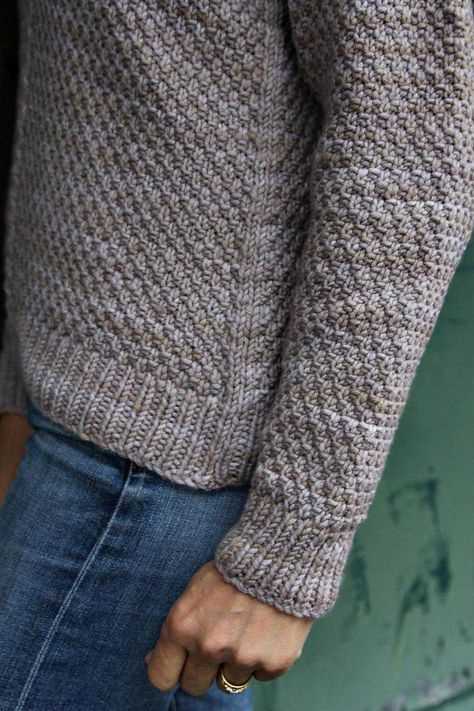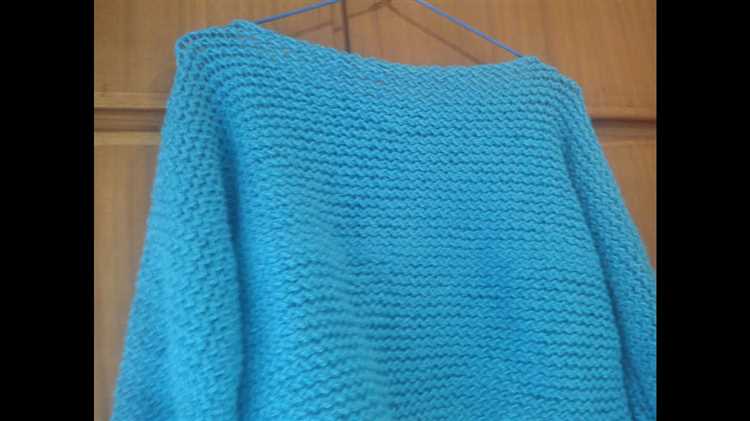If you’ve always wanted to knit a sweater but have been intimidated by the traditional needles and yarn concept, then knitting with a loom is the perfect alternative for you. Knitting with a loom is a simple and enjoyable way to create beautiful garments, and it’s great for beginners too! In this guide, we’ll walk you through the process of knitting a sweater using a loom, providing expert tips and a step-by-step guide.
Using a loom to knit a sweater has many advantages. One of the biggest advantages is that it eliminates the need for traditional knitting needles. If you struggle with using needles or find them uncomfortable, a loom can be a great solution. Loom knitting also allows for faster knitting, as you can easily work with a large number of stitches at once. Additionally, with a loom, you can achieve the same intricate patterns and designs as traditional knitting.
In this step-by-step guide, we’ll start by explaining the basics of loom knitting, including the different types of looms and yarns you can use. We’ll then guide you through the process of casting on, knitting the body of the sweater, and shaping the neckline and sleeves. We’ll provide clear instructions and helpful tips to ensure your knitting journey is a success.
Whether you’re a complete beginner or an experienced knitter looking to try something new, this guide will teach you everything you need to know about knitting a sweater with a loom. So grab your loom and yarn, and let’s get started on creating a beautiful sweater that you can proudly wear!
Choosing the right loom
When it comes to knitting a sweater with a loom, choosing the right loom is essential. The loom you select will determine the size and style of your sweater, as well as the overall knitting experience. Here are some factors to consider when choosing a loom:
- Size: Looms come in various sizes, ranging from small to large. The size of the loom will determine the width and length of your sweater. Consider the desired size of your sweater before selecting a loom.
- Gauge: Looms have different gauges, which refer to the number of pegs per inch. The gauge of your loom will affect the thickness of the yarn you can use and the density of the knit. Make sure to choose a loom with a gauge that matches your yarn and desired stitch tension.
- Shape: Looms come in different shapes, including round, rectangular, and oval. The shape of the loom will affect the shape of your sweater. Round looms are ideal for knitting hats and cowls, while rectangular or oval looms are better suited for sweaters.
- Material: Looms are typically made from plastic, wood, or metal. The material of the loom will affect its durability and flexibility. Plastic looms are lightweight and affordable, while wooden and metal looms are sturdier and offer more tension control.
- Extras: Some looms come with extra features, such as adjustable pegs or removable sections. These extras can come in handy when knitting a complex sweater pattern or adjusting the size of your loom.
Overall, the right loom for you will depend on your personal preferences, knitting project, and experience level. Take your time to research and compare different looms before making a decision. With the right loom, you’ll be on your way to knitting a beautiful sweater in no time!
Selecting the perfect yarn
When it comes to knitting a sweater with a loom, selecting the right yarn is crucial. The type and quality of yarn you choose will not only affect the overall look of your sweater but also how it feels when worn. Here are some factors to consider when selecting the perfect yarn:
- Fiber: The type of fiber used in the yarn will determine the characteristics of your sweater. Common options include wool, cotton, acrylic, and blends. Wool provides warmth and elasticity, while cotton offers breathability and durability. Acrylic yarn is often budget-friendly and easy to care for. Consider your climate and desired comfort level when choosing the fiber.
- Weight: Yarn weight refers to the thickness of the yarn. There are several standard weight categories, from lace and fingering to bulky and super bulky. The weight of yarn you choose will directly impact the drape and thickness of your sweater. Check your pattern for the recommended yarn weight to ensure the desired outcome.
- Texture: The texture of the yarn can add visual interest to your sweater. Options range from smooth and even to textured or fluffy. Consider the stitch pattern you plan to use and whether you want your sweater to have a smooth or textured appearance.
- Color: Color is a personal preference, and it can significantly impact the look of your sweater. Consider the occasion and intended use of your sweater when selecting the color. Darker shades may be more forgiving for everyday wear, while brighter colors can add a pop of color to your wardrobe.
- Quantity: Before purchasing your yarn, be sure to estimate the quantity needed for your sweater. This will depend on factors such as the size of the sweater, the stitch pattern used, and the yarn weight. Your pattern should provide guidance on the estimated quantity of yarn needed.
Once you have considered these factors, you can start exploring different yarn options. Don’t be afraid to touch and feel the yarn in person, as its texture and softness can play a significant role in your final decision. Remember, selecting the perfect yarn is an essential step towards creating a beautiful and comfortable knitted sweater.
Getting started
Before you begin knitting a sweater with a loom, it’s important to gather all the necessary supplies. Here’s what you’ll need:
- A knitting loom
- Knitting loom hook
- Yarn in your desired color and weight
- Scissors
Once you have your supplies ready, follow these steps to get started:
- Choose a knitting pattern: There are many sweater patterns available online or in knitting books. Find a pattern that matches your skill level and style preferences.
- Read the pattern: Before you start knitting, make sure you understand the instructions and have a clear idea of what the finished sweater will look like.
- Choose your yarn: Select a yarn that is suitable for the pattern you’ve chosen. Consider the fiber content, weight, and color of the yarn.
- Gauge swatch: Knit a swatch using the yarn and loom you’ve chosen to determine your gauge. This will ensure that your sweater fits properly.
- Calculate measurements: Take your own measurements or the measurements of the person you’re knitting the sweater for. Use these measurements to determine the number of stitches and rows you’ll need to knit.
- Cast on: Start by casting on the required number of stitches onto the loom. Follow the pattern instructions for the specific cast-on method.
Once you’ve completed these steps, you’ll be ready to start knitting your sweater. Make sure to refer back to the pattern instructions as you progress and take your time to create a high-quality garment.
Basic stitches and techniques
When it comes to knitting with a loom, there are a few basic stitches and techniques that you will need to learn. These stitches will form the foundation of your sweater and will allow you to create a variety of patterns and designs.
- E-wrap stitch:
- Purl stitch:
- Knit stitch:
- Decreasing:
- Increasing:
- Casting off:
The e-wrap stitch is the most basic stitch and is used to create the majority of the fabric. To create an e-wrap stitch, simply wrap the yarn around each peg in a clockwise direction and then lift the bottom loop over the top loop and off the peg.
The purl stitch is used to create a different texture and to add variety to your fabric. To create a purl stitch, simply lift the bottom loop over the top loop and off the peg, without wrapping the yarn around the peg.
The knit stitch is similar to the e-wrap stitch, but instead of wrapping the yarn around each peg, you will be using a knitting hook to pull the bottom loop over the top loop and off the peg. This stitch creates a tighter fabric with a different texture.
Decreasing allows you to shape your sweater by reducing the number of stitches. There are different methods for decreasing, such as knit two together (k2tog), slip, slip, knit (ssk), and others. These techniques create a smooth and gradual decrease in stitches.
Increasing is the opposite of decreasing and allows you to add stitches to your fabric. There are different methods for increasing, such as make one (M1), knit front and back (kfb), and others. These techniques create a smooth and gradual increase in stitches.
Casting off is the final step in finishing your sweater. It involves removing the stitches from the loom in a way that creates a neat and elastic edge. There are different methods for casting off, such as the basic bind off or the stretchy bind off.
By mastering these basic stitches and techniques, you will have a solid foundation for knitting your own sweater on a loom. With practice and experimentation, you can create beautiful, custom designs that showcase your knitting skills.
Shaping and sizing the sweater
Shaping and sizing the sweater is an important step in the knitting process. It ensures that the sweater fits well and looks flattering on the wearer. Here are some expert tips and a step-by-step guide to help you shape and size your sweater using a loom.
1. Take accurate measurements:
Before you start knitting your sweater, it’s crucial to take accurate measurements of the wearer. Measure the chest, waist, and hip circumference, as well as the sleeve length, shoulder width, and overall length. This information will help you determine the right size and shape for your sweater.
2. Choose the right loom size:
Selecting the correct loom size is essential for achieving the desired sweater size. The loom size should correspond to the wearer’s measurements and the gauge of your yarn. Refer to the loom’s instruction manual or consult an expert to help you choose the right size.
3. Create a swatch:
Before you start working on the sweater, create a swatch using the loom and yarn you’ve chosen. This will help you determine the gauge and make any necessary adjustments to your pattern or loom size. Measure the gauge by counting the number of stitches and rows per inch.
4. Calculate the stitch count:
To determine the stitch count for each section of your sweater, multiply the desired inches or centimeters by the gauge. Make sure to account for any shaping stitches, such as decreases or increases, as well as any ribbing or pattern stitches. This will help you create a well-fitting sweater.
5. Knit the sweater in sections:
When knitting the sweater, it’s best to work in sections, such as the front, back, sleeves, and neckline. This allows for easier shaping and reduces the risk of mistakes. It’s important to follow the pattern or your calculations accurately to achieve the desired shape and size.
6. Check your progress:
As you knit each section, periodically check the fit and size against the wearer’s measurements. Try the piece on, and make any necessary adjustments to ensure a proper fit. This will help you catch any mistakes or inconsistencies early on.
7. Finishing touches:
After completing the knitting, it’s time to add the finishing touches, such as sewing the pieces together and adding any necessary ribbing, cuffs, or collars. Make sure to secure all loose ends and block the sweater to give it a polished look.
By following these expert tips and step-by-step guide, you’ll be able to shape and size your sweater with a loom successfully. Enjoy the knitting process and the satisfaction of creating a beautiful garment!
Finishing touches
Once you have completed knitting the sweater using a loom, it’s time to add the finishing touches. These final steps will make your sweater look professional and neat. Here are some important finishing touches to consider:
- Weaving in loose ends: Trim any leftover yarn and use a tapestry needle to weave in the loose ends into the fabric. This will ensure that your sweater is secure and doesn’t have any loose threads.
- Blocking: Blocking is an important step to shape your sweater and give it a finished look. You can do this by wetting your sweater in lukewarm water and gently stretching it to the desired shape. Lay it flat to dry.
- Seaming: If your sweater was knit in separate pieces, you will need to seam them together. Use a whipstitch or mattress stitch to sew the pieces together, ensuring that the seams are invisible and the sweater looks seamless.
- Adding buttons or closures: If your sweater has a button-up front or requires closures, sew on buttons or attach the desired closures using a needle and thread. Make sure they are secure and evenly spaced.
These finishing touches will not only enhance the appearance of your knitted sweater but also add durability and longevity to your creation. Take your time and pay attention to detail to create a sweater that you will be proud to wear or gift to someone special. Happy knitting!
Troubleshooting and Expert Tips
Knitting with a loom may seem intimidating at first, but with some practice and the right techniques, you can create beautiful sweaters. However, like any craft, you may encounter some challenges along the way. Here are some troubleshooting tips and expert advice to help you overcome common issues and enhance your knitting experience:
1. Tension Issues
One common problem faced by beginners is maintaining consistent tension throughout the project. If your stitches are too tight, the fabric may become stiff and inflexible. On the other hand, if the stitches are too loose, the fabric may appear uneven and sloppy. To ensure proper tension:
- Practice knitting with a loom using different yarns to find the perfect tension that suits your style.
- Keep an even tension by making sure each loop on the loom is wrapped with the same amount of yarn.
- Avoid pulling the yarn too tightly or too loosely while knitting.
2. Dropped Stitches
It can be frustrating to discover a dropped stitch in your knitting. To fix this issue:
- Stop knitting immediately when you notice the dropped stitch.
- Use a crochet hook or a small knitting needle to pick up the dropped stitch from the row below and place it back onto the loom.
- To prevent dropped stitches, count your stitches regularly and fix any mistakes immediately.
3. Wrong Sizing
Ensuring that your sweater fits properly is essential. To avoid size-related problems:
- Take accurate body measurements or use a standard sizing chart to determine the correct size for your sweater.
- Choose the right size of loom and yarn thickness to match the desired measurements.
- Make a gauge swatch before starting the sweater to check if your stitches and rows match the pattern’s specifications.
4. Creating Neat Seams
Seaming the pieces together is the final step in knitting a sweater with a loom. To achieve neat seams:
- Use a tapestry needle and matching yarn to sew the seams.
- Align the edges of the pieces properly and sew them together with an invisible seam or the preferred method described in the pattern.
- Take your time and sew carefully to ensure a professional finish.
5. Practice and Patience
Knitting with a loom is a skill that improves with practice. Remember to be patient with yourself and enjoy the process. Look for resources like tutorials, online communities, and expert knitters who can provide valuable guidance and encouragement. With time and practice, you’ll become more confident and skilled, creating beautiful sweaters with ease.
Now armed with troubleshooting tips and expert advice, you’re ready to tackle knitting a sweater with a loom. Start with a simple pattern and gradually challenge yourself with more complex designs. Happy knitting!
FAQ:
What is a knitting loom?
A knitting loom is a tool that allows you to create knitted fabric without using knitting needles. It consists of a frame with pegs or pins on which you wrap the yarn to create stitches.
Do I need knitting experience to use a loom?
No, you don’t need any knitting experience to use a loom. Loom knitting is a great alternative for those who find traditional knitting with needles difficult or intimidating. It’s a simple and easy way to create beautiful knitted projects.
What materials do I need to knit a sweater with a loom?
To knit a sweater with a loom, you will need a knitting loom, a loom hook or knitting needle, and yarn of your choice. You may also need a loom knitting pattern for the sweater you want to make, as well as basic knitting tools like scissors and a tapestry needle.
Is it difficult to knit a sweater with a loom?
Knitting a sweater with a loom can be a bit more time-consuming compared to using knitting needles, but it is generally considered to be an easier method. With the right instructions and some practice, you can easily create a beautiful sweater using a loom.


